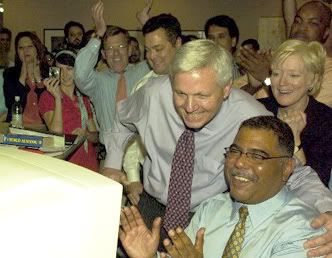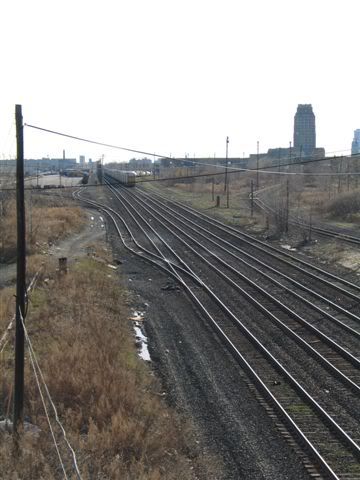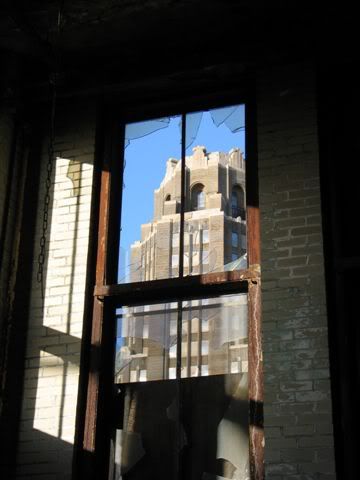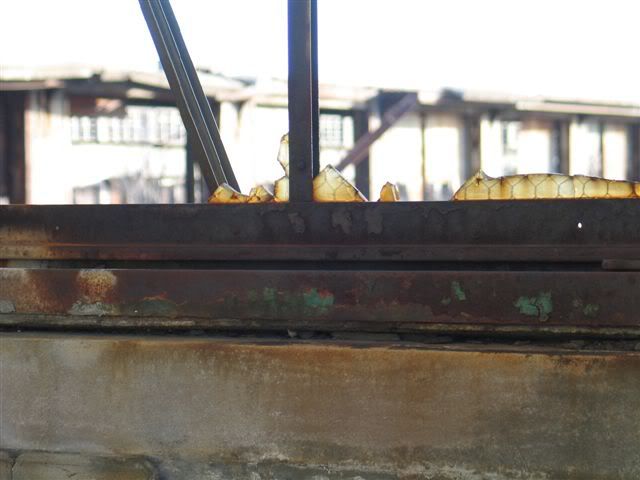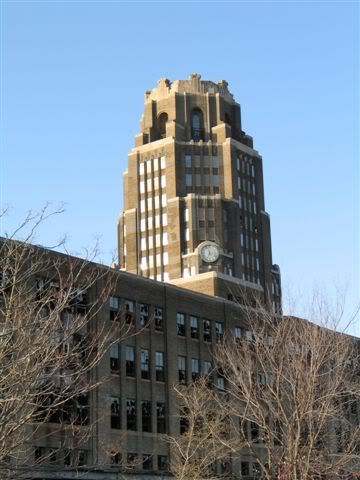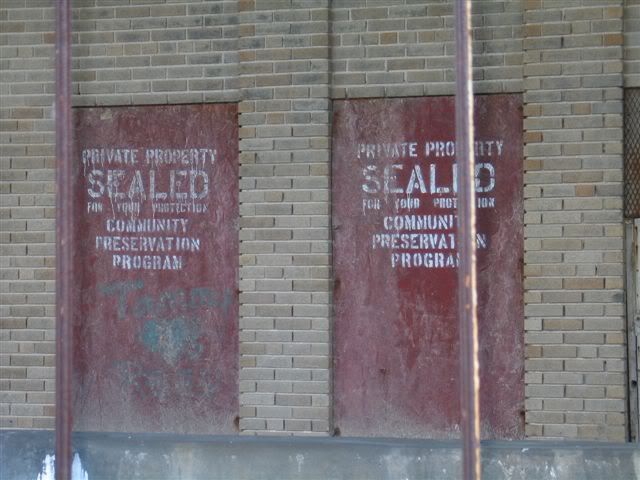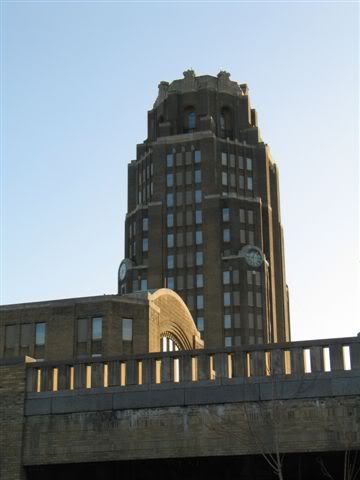This is a question for members of the Jewish community (of which I am a member) or others with insight on it: |
Tuesday, April 24, 2007
Jewish communities in US cities: size or age
Posted by
Admin
at
11:30 PM
0
comments
![]()
Best suburban college town
Probably our first thought of an ideal college town is in a bucolic setting of its own, creating the perfect atmosphere for town and gown to create their own world. |
Posted by
Admin
at
10:30 PM
0
comments
![]()
Detroit as a metaphor
Think about a city like Detroit, a place many Americans assumed died, was dying, is in the process of dying, or is already dead. |
Posted by
Admin
at
10:00 PM
0
comments
![]()
US Metros with High Millionaire Concentrations
Axciom and American Demographics put together an index of Millionaire Households across the country here are some of their findings |
Posted by
Admin
at
9:00 PM
0
comments
![]()
Trusted banks in the US
Put your best bank here and tell us why you trust them. |
Posted by
Admin
at
8:30 PM
0
comments
![]()
Cost of Illegal Immigration May Be Less Than Meets the Eye
http://www.nytimes.com/2006/04/16/bu...=1&oref=slogin |
Posted by
Admin
at
7:30 PM
0
comments
![]()
What food is your city famous for?
what food is your city famous for? where are the best places to get these foods? what restaurants and other place have big reputations in your city? |
Posted by
Admin
at
7:00 PM
0
comments
![]()
the Richest cities.
ok which us cities has the most millionaires and has the richest neighorborhoods? from i last heard the top richest cities were LA and chicago.> |
Posted by
Admin
at
6:30 PM
0
comments
![]()
Buffalo, NY area
What do you think about the Buffalo, NY area? |
Posted by
Admin
at
6:00 PM
0
comments
![]()
Small toursit cities?
So what are some small cities that base most of their economy on tourism? Also these cities cannot be attached to a metropolitain region. It has to be by itself far from a major city. What I mean are cities like Wisconsin Dells, and Branson. Got any others?> |
Posted by
Admin
at
5:30 PM
0
comments
![]()
NFL and NCAA Sports Teams Areas of Influence!
OK, this is highly unscientific, but it gives us an idea of public perception.. |
Posted by
Admin
at
5:00 PM
0
comments
![]()
YOUR FAVORITE CITY, LA OR NYC?
A lot of people in the LA threads have been saying their city is better than NYC. We'll see. |
Posted by
Admin
at
4:00 PM
0
comments
![]()
Have the fwy/expy scars in your city healed yet?
Let's face it....when those expressways and freeways of the interstate hwy. system came ripping through your cities in the 1950's and 1960's (and paved the path to exodus to suburbia), they tore into the urban fabric, separated neighborhood from neighborhood, and brutalized their immediate environment. |
Posted by
Admin
at
3:30 PM
0
comments
![]()
OKoboji iowa
Has anyone been to okoboji iowa. it gets over a million people visiting it a year and on west lake okoboji the average home price is over 1.2 million. It also has the oldest roller coaster west of the mississippi river. Its growing really fast berekely bedell has a house on the lake worth 13 million dollars and arnolds park has famous people sing there often last year i could remember the guy from dukes of hazard and weird al. Harrison ford might buy a house on the lake worth alot of money. It is one of 3 blue water lakes in the world, but to me alot of lakes look blue. |
Posted by
Admin
at
3:00 PM
0
comments
![]()
The Largest Churches in The United States, 2005
Largest Churches in The United States |
Posted by
Admin
at
12:30 PM
0
comments
![]()
Personal Endurance Lands New Orleans' Times-Picayune Awards..Unreal Read
|
Posted by
Admin
at
12:00 PM
0
comments
![]()
Best, most attractive college towns
What are the best college towns, based on collegiate feeling, attractiveness? How about Madison, Ann Arbor, Charlottesville, Chapel Hill, Princeton, Athens, Boulder, Austin (not necessarily in this order).....and isn't it sad that there are no real college towns in the nation-state that is California (maybe because Cal, Stanford, UCLA, and SC are all metro area schools).> |
Posted by
Admin
at
9:30 AM
0
comments
![]()
Houston, Texas Sucks
Dudes with all of these gas prices going through the roof, three dollars per gallon for friggin unleaded. Do you think cities like Houston would suck to live in?> |
Posted by
Admin
at
8:30 AM
0
comments
![]()
Where in the U.S. Would I be able to find houses like this?
This is a wealthy house in a wealthy Toronto neighbourhood. Are there any neighbourhoods in the United States that can match this? |
Posted by
Admin
at
7:30 AM
0
comments
![]()
Southern Living's Take on Louisville
http://www.cnn.com/2006/TRAVEL/DESTI...cky/index.html |
Posted by
Admin
at
6:00 AM
0
comments
![]()
what city uses other big cities in a metro to boost their importance?
I havea problem with Dallas thinking that Ft. Worth is the same city as Dallas. Many of their statistics are scewed because Ft. Worth is included in them. Ft. Worth is a entirely seperate city and my it self is considered big. |
Posted by
Admin
at
5:00 AM
0
comments
![]()
What are the most expensive and best shopping streets.
to me the most expensive streets are 5th avenue, ny oak street, chicago rodeo dr, lA |
Posted by
Admin
at
4:00 AM
0
comments
![]()
Worst US State to take a drive in?
Which US states do you abhor the most for having bad interstates or highways? For me, it's I-81 Pennsylvania. Absolute horror I must say.> |
Posted by
Admin
at
3:30 AM
0
comments
![]()
Buffalo's NY Central Terminal (photos)
Okay, lots of the old rust-belt cities have large train stations, some are beautiful and some are now empty. |
Posted by
Admin
at
1:30 AM
0
comments
![]()
A City Created in a single day: The 1889 Land Run
Land Run of 1889 |
Posted by
Admin
at
12:30 AM
0
comments
![]()
How long after graduation can one afford a home in the city?
I'm just curious to know how long after a student graduates can he expect to be able to purchase his own home, should he choose to stay in OR very very near the city. |
Posted by
Admin
at
12:00 AM
0
comments
![]()





 >
>  >
> 